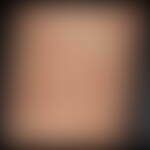Synonym(s)
HistoryThis section has been translated automatically.
DefinitionThis section has been translated automatically.
Asymptomatic, chronic, necrobiotic, granulomatous inflammation of the skin, with formation of skin-coloured or slightly reddened papules and plaques that form characteristic anular structures.
You might also be interested in
EtiopathogenesisThis section has been translated automatically.
Pathogenesis unclear. A late type reaction involving cell-mediated immune processes is suspected.
It occurs after insect bites or other local trauma, in the context of infections (association with viral infections, e.g. Epstein-Barr virus, HIV, herpes zoster virus and SARS-CoV-2), autoimmune diseases of the thyroid gland, frequently in diabetes mellitus.
There is good casuistic evidence for drug-induced granuloma anulare. The following drugs were listed (cited n. Boyoung Lee S): Adalimumab (n=5), allopuriol (n=3); gold (n=2), infliximab (n=2), topiramate (n=2), amlodipine, calcitonin, diclofenac, etanercept, interferon alpha, paroxetine, thalidomide, phostal stalergenes; vemurafib (n=1 each) .
Of historical and pathogenetic interest is the occurrence of granuloma anulare with vitamin D3 therapy(granuloma anulare vigantolicum) in tuberculosis.
In former times often associated with tuberculosis. Possibly genetic predisposition.
ManifestationThis section has been translated automatically.
Occurs mainly in children and adolescents, preference for the female sex.
LocalizationThis section has been translated automatically.
ClinicThis section has been translated automatically.
In the classic and most common granuloma anulare, there is a solitary, or a few, circular or ring-shaped, completely asymptomatic ornaments that can reach a diameter of 1.0 to 3.0 cm. The ring or circular ornaments are composed of smaller, approximately 0.1-0.3 cm, aggregated, firm, red or skin-colored, surface-smooth nodules and plaques. In most cases, the composite nodule structure is still evident after prolonged persistence. The growth is slow and can last for many months. If 2 papule circles meet, arcuate ornaments result, which efface each other in places.
Typically, the single efflorescence of granuloma anulare does not exceed a maximum size of 5.0 cm.
In rare cases, however, an extreme extension up to 10.0 cm may occur(granuloma anulare giganteum), without any explanation in individual cases.
HistologyThis section has been translated automatically.
Circumscribed nodular sites of inflammation in the upper and middle dermis (rarely located in subcutaneous fatty tissue) with central necrobiosis and throughput with nuclear fragments. Characteristic is an enclosing palisade granuloma of lymphocytes, macrophages (histiocytes), fibroblasts and, more rarely, multinuclear giant cells. Occasionally also admixtures of eosinophilic leukocytes and plasma cells. Rarely vasculitic changes can be detected with leukocytoclasia. In the granuloma anulare of the interstitial type, less nodular but rather diffuse interstitial infiltrates of CD68-positive histiocytes and lymphocytes around alcian blue-positive mucin deposits in the reticular dermis are observed.
DiagnosisThis section has been translated automatically.
Differential diagnosisThis section has been translated automatically.
Necrobiosis lipoidica (when localized on the lower extremity): Teleangiectasia, sunken, greasy, shiny center, mainly localized on the extensor side of the lower legs.
Sarcoidosis: mainly in cool skin areas such as the face; typical diascopically detectable infiltrate.
Rheumatoid nodules: positive rheumatoid factor or ANA.
Syphilis: positive syphilis diagnosis.
Lichen myxoedematosus: mainly on the thighs, trunk, extensor sides of the arms and back of the hands, with dense, whitish to yellowish papules, also in a linear arrangement. Histology is diagnostic.
Lichen planus anularis: on the flexor sides of the joints and mucous membrane with typical Wickham's pattern. Histology is diagnostic.
Dermatitis, interstitial, granulomatous with arthritis: very rare, clinical picture has not yet received a clear clinical contour.
TherapyThis section has been translated automatically.
- Children: Wait for spontaneous remission, if necessary mask with foil, hydrocolloid foil (e.g. Varihesive extra thin) or adhesive plaster bandage. If necessary, occlusive dressing with topical glucocorticoids (e.g. Ecural Fatty Ointment).
- Adults: Triamcinolone acetonide crystal suspension intralesional (e.g. Volon A 10 mg, 1:3-1:5 diluted with local anaesthetics, e.g. Scandicain), multiple, or occlusive dressing with fluorinated glucocorticoid ointments (e.g. Ultralan ointment). In older, otherwise therapy-resistant foci, cryosurgery with a closed system may be necessary: temperature at the stamp -180/-190 °C, only brief freezing. If necessary, repeat after 10-14 days.
Radiation therapyThis section has been translated automatically.
Internal therapyThis section has been translated automatically.
Antimalarial drugs e.g. Hydroxychloroquine Initial 400 mg/day for 4-8 weeks, then 200 mg/day and further reduction depending on the findings.
Alternative: In case of generalised infestation ( Granuloma anulare disseminatum), test with fumaric acid esters e.g. Fumaderm Tbl (well effective; off-label use).
Alternative: Retinoids ( Acitretin) in an initial dosage of 0.5 mg/kgkgkg and a maintenance dose of 0.1-0.2mg/kg/kg.
Alternatively, retinoids in combination with glucocorticoids. Acitretin dose as before; glucocorticoid dose (prednisolone) initial 0.5mg/kg/kgkg, maintenance dose (several months) with 0.05-0.1 mg/kg/kg.
Alternatively, dapsone (DADPS). Initial 100-200 mg/day p.o. with slow dose reduction.
Progression/forecastThis section has been translated automatically.
LiteratureThis section has been translated automatically.
- Boyoung Lee S et al (2016) Vemurafenib-induced granuloma anulare. JDDG 14: 305-308
- Breuer C (2005) Therapy of noninfectious granulomatous skin diseases with fumaric acid esters. Br J Dermatol 152: 1290-1295
- Fölster-Holst R et al (1996) Unusual circulatory variant of a generalized granuloma anulare. Dermatologist 47: 53-57
- Guardiano RA et al (2003) Generalized granuloma annulare in a patient with adult onset diabetes mellitus. J Drugs Dermatol 2: 666-668
- Kolde G (2014) Granulomatous dermatoses. Act Dermatol 40: 193-204
- Limas C (2004) The spectrum of primary cutaneous elastolytic granulomas and their distinction from granuloma annulare: a clinicopathological analysis. Histopathology 44: 277-282
- Looney M et al (2004) Isotretinoin in the treatment of granuloma annulare. Ann Pharmacother 38: 494-497
- Proske U et al (2011) Granuloma anulare giganteum et disseminatum. Act Dermatol 37: 210-212
- Radcliffe Crocker H (1903) Diseases of the Skin. 3rd edn., HK Lewis, London
Incoming links (35)
Angiohistiocytoma with giant cells; Arndt georg; Crocker, radcliffe henry; Erythema anulare centrifugum; Etanercept; Examination scheme, dermatological; Fibrosarcoma sclerosed epitheloid cell; Fox, thomas calcott; Giant cell granuloma anular elastolytic; Gouty tophi; ... Show allOutgoing links (25)
Acitretin; Antimalarials; Cd68; Cryosurgery; Cutaneous tuberculosis; Dadps; Fumaric acid ester; Glucorticosteroids topical; Granuloma anulare disseminatum; Granuloma anulare vigantolicum; ... Show allDisclaimer
Please ask your physician for a reliable diagnosis. This website is only meant as a reference.

















